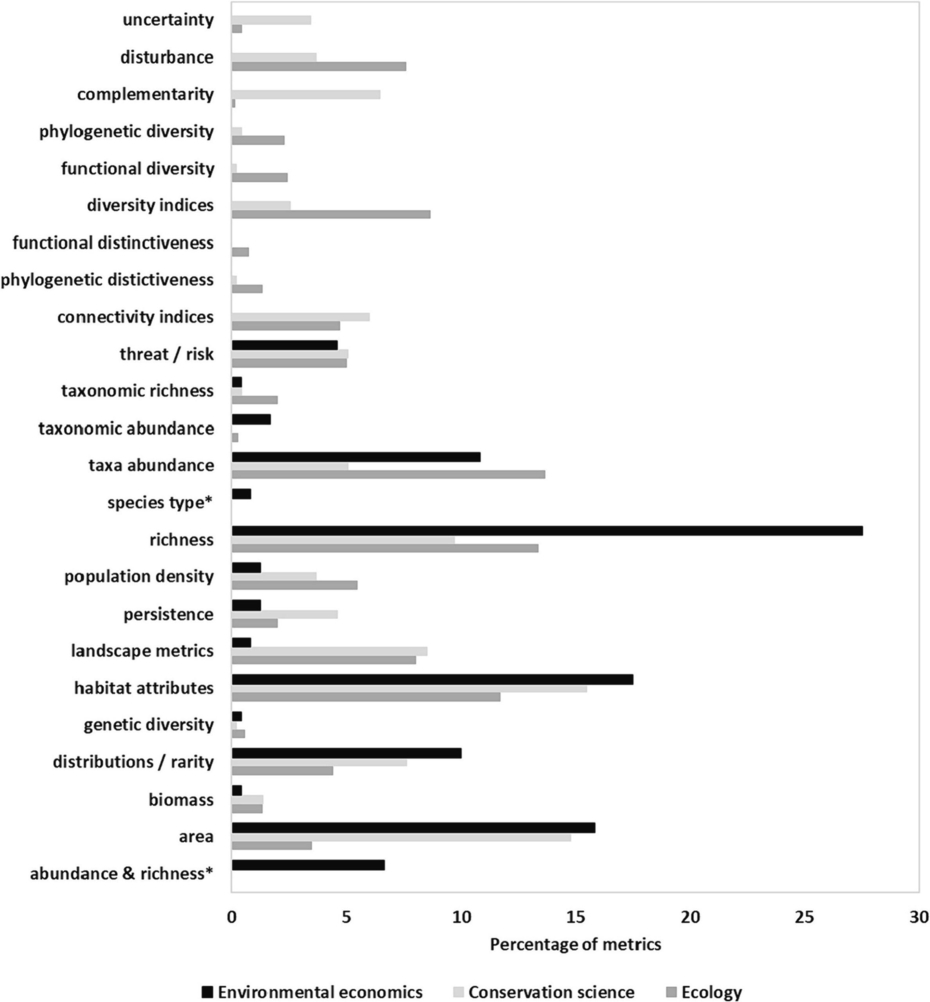Why it matters how biodiversity is measured in environmental valuation studies compared to conservation science

Why it matters how biodiversity is measured ...
In this study we find a high degree of overlap in the broad biodiversity metrics used in environmental valuation compared to conservation and ecology. However, the measures generally fail to capture the ecosystem processes driving biodiversity persistence.
The undervaluation of biodiversity in decision-making is a critical issue that contributes to continued biodiversity declines and loss of environment. This issue is exacerbated in environmental economics by the need to keep measures of biodiversity simple for communication to the public due to limited background knowledge and cognitive limitations. Therefore, there is a clear need to improve the biodiversity metrics used in biodiversity valuation and environmental economics, without using overly complex measures. However, it is unclear how much overlap exists in the metrics currently used in these fields as compared to those being used in more biodiversity focused disciplines such as conservation and ecology. Here, we use a rapid evidence assessment approach to categorise the measures and attributes used in environmental valuation studies into broad groups of biodiversity metrics. We compare this to previous research categorising biodiversity metrics used in conservation and ecology to determine how well environmental valuation studies are capturing the values important for measuring biodiversity in practice. We find a high degree of overlap in the broad biodiversity metrics used in environmental valuation compared to conservation and ecology. However, the overlap mostly consistent of simplistic easy to measure habitat attributes and species occurrence measures. The measures generally fail to capture the ecosystem processes driving biodiversity persistence and therefore may not capture the ecosystem services or welfare attributes important to people. We discuss the implications of these areas of mismatch, and point towards future directions in stated preference research and technological advances, which might allow for the valuation of more complete and complex dimensions of biodiversity.
- Economic & Financial
- Implementation

